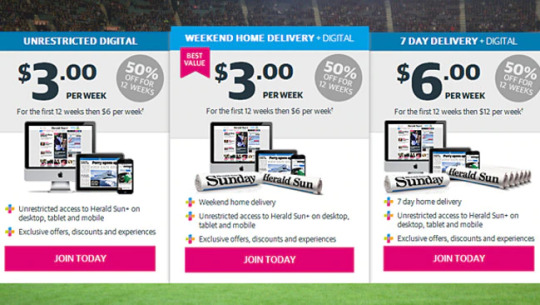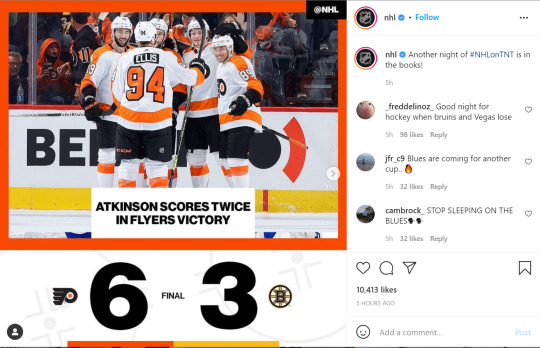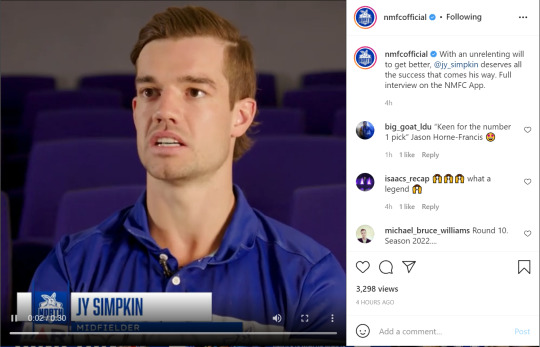Text
Digital Sport and Digital Media
Assessment two: Critical Analysis Portfolio
Lecturer: Davin Sgargetta
Submission Date: 21/10/2021
By: Sarah Ashby
0 notes
Text
Fantasy Sport & Gaming
In todays current climate, ‘sport has offered a vital respite from the trials and tribulations of life’ (Ploeg & Ruihley, 2021, p.1) and fantasy sport and gaming has allowed individuals to stay involved even when the draw for real sport has become unpredictable.
Because there are so many genres and competitions included in fantasy sport and gaming, there is truly something for everyone. This means that with ‘technological advancement and high speed internet’ (Tsinidis, J, 2016) if an individual can’t participate in sport, this could be another option for them. Fantasy sport and gaming are not physically strenuous and if someone has an injury, it still has the same competitive nature.
Due to the increase in interest and participation, there is a need for specific fantasy sport stadiums that cater to fans and fantasy teams. These stadiums bring along more jobs for the tech industry as well as general floor job’s such as hospitality and security.
Athletes such as Deja McClendon have become involved with fantasy sport. McClendon became an ambassador for She Plays who provides ‘fantasy sports for women's leagues’ (Holmes, 2021) along with sport news in general.

A current challenge for fantasy sport and gaming is that it draws away athletes and sporting events. This means that broadcasters have decreased views and sponsors lose traction. Some fantasy sports games (such as NBA 2K) wouldn’t be around or the same if it weren’t for athletes who play professional basketball. They would be using fake athletes with fake names, whereas because of real basketball, they have teams, team colours, athletes, and skill knowledge.
Sponsorships such as technology companies wouldn’t be typically seen as a sponsor for NBA teams or AFL teams as they have limited benefits. The fans would need more of a push/enticement to play fantasy sports and games as having a technology sponsor isn’t enough to push individuals into playing competition gaming.
If NBA 2K was an Olympic sport, it would take away from the professional basketball players who have played and pushed their bodies physically to get to the level they are at now.
Although there are benefits to fantasy sport and gaming such as new jobs and broadcaster rights, there are also some negatives that come with it. One major negative is that electronic gaming takes away from the excitement and atmosphere of real sporting stadiums and athletes who have trained and pushed themselves physically every day for hours.
Hoffman, R. (2020). Fantasy sports [Illustration]. The Sports Geek. https://www.thesportsgeek.com/blog/getting-started-with-daily-fantasy-sports-wagering/.
Holmes, A. (2021, March 1). Volleyball star Deja McClendon partners with she plays as an athlete ambassador. She Plays. https://au.she-plays.com/2021/03/01/volleyball-star-deja-mcclendon-partners-with-she-plays-as-an-athlete-ambassador/.
Ploeg, J, Ruihley, B. (2021). Genealogies of fantasy sport. The International Journal of the History of Sport, 38(1), 1-6. https://www.tandfonline.com/doi/pdf/10.1080/09523367.2021.1902194.
Tsinidis, J. (2016). Egaming the new content, the new King. Equity, 30(2), 4-5. https://search-informit-org.ezproxy.holmesglen.edu.au/doi/epdf/10.3316/informit.825519288573363.
0 notes
Text
Challenge Traditional Models
In a journal by Henry Chesbrough (2010, p.355), it is discussed that traditional business models aim to fulfil the following functions:
- Articulates ‘value proposition’ - ‘Identifies a market segment’ - ‘Revenue’ information - ‘Formulates the competitive strategy’
This business model works with the audience paying, advertisers pay to have their content produced and then distributors pay to sell their content in physical form.
Business models are in place to improve the company/sporting organisation over time and hit major and minor goals. Within a business model activities such as ‘design’ and ‘supplies’ along with ‘finding your audience’ (Pereira, 2021, para. 4) which applies to digital media channels. In the digital age, companies are able to incorporate social media, emails, online newsletters, and websites to reach their audience.

This impacts the sports industry when there are scandals because every reporter will want to have their piece seen by an audience. They will go to great lengths to gather information such as who was involved, what time the event happened and finding witnesses. This means that reporters will go hard at these athletes which in return could damage the organisation's reputation.
With technological advancements, sporting organisations have the opportunity to build on their social media guidelines and offer their athletes and staff training on how to behave in the eyes of the media. This applies when there is a crisis within the club or associating with one of the player's actions on or off the field.

Negative journalism can not only affect the player but the sporting organisation as a whole. An example of this is the ball-tampering scandal in 2018. This incident not only affected the players involved but the men's Australian side and Cricket Australia. If the team were media trained before this event, they may have been more prepared for intense questions and for journalists to pry into their personal lives.
A current issue is that there are a lot of companies that are online such as ABC, Nine News, and The Herald Sun. Journalists are willing to risk their health and wellbeing to get ahead of others after the same story. In 2021, a channel seven reporter named Paul Dowsley was ‘attacked’ (Paynter & Clench, 2021, para.1) by being grabbed by protestors in Melbourne and had what he believed to be ‘urine’ (Dowsley, 2021, 0:37) poured on himself and his cameraman.
Everyone has access to ‘smartphones, tablets, e-book readers, and other resources’ (Roshong, 2019, para. 3) that can be utilised by companies to reach their audience. But, an article published in The Agent discusses current issues such as ‘internet trolls’, ‘responding to negative comments (2013, p.14) and ‘an error or typo’ (2013, p.15). This means that organisations must take into consideration what they post, and how they want to portray themselves on social media so they build a positive and united community online.
Ball tampering scandal [Photograph collage]. (2018). https://talksport.com/sport/cricket/356917/australia-ball-tampering-scandal-steve-smith-and-david-warner-handed-12-month-bans/.
Berns, S. (2021). Digital media [Ilustration]. Centric HR. https://www.centrichr.co.uk/free-webinar-get-paid-to-take-on-a-digital-marketer-through-kickstart/.
Chesbrough, H. (2010). Business model innovation: Opportunities and barriers. Long Range Planning, 43(2), 354-363. doi:10.1016/j.lrp.2009.07.010.
Dowsley, P. (Channel 7). (September 22, 2021). Channel 7 reporter Paul Dowsley says protesters have poured urine on him as he covers the protest fo the free-to-air network [video]. News.com. https://www.news.com.au/entertainment/tv/channel-7-reporter-paul-dowsley-sprayed-with-urine-by-protesters-in-melbourne/news-story/b411e92951df730b0df1f932c5ca3332.
N/A. (2013). Social media strategies. The Agent, 46(5), 13-17. https://search-informit-org.ezproxy.holmesglen.edu.au/doi/epdf/10.3316/informit.702241976793917.
Paynter, J, Clench, S. (2021, September 22). Channel 7 reporter Paul Dowsley says protesters have poured urine on him as he covers the protest fo the free-to-air network. News.com. https://www.news.com.au/entertainment/tv/channel-7-reporter-paul-dowsley-sprayed-with-urine-by-protesters-in-melbourne/news-story/b411e92951df730b0df1f932c5ca3332.
Pereira, D. (2021, July 30). Business model- What is it and how it works. The Business Model Analyst. https://businessmodelanalyst.com/business-model/.
Roshong, M. (2019, October 1). Communicating in the digital age. Strategic Finance. https://sfmagazine.com/post-entry/october-2019-communicating-in-the-digital-age/.
0 notes
Text
Monetising Digital Media
Content published by organisations can range from podcasts to videos and blogs to websites and be monitised to create a new stream of revenue. Organisations are able to implement a subscription/paywall system and others may only lock some episodes and blogs that are seen to be exclusive to those who pay.
Paulina Kubala-Chuchnowska posted an article discussing numerous strategies that can be used by organisations such as:
- “Direct selling” - “Subscriptions and paywalls” - “Advertising” - “Sponsored content” (2020)
Monetising digital media in a sporting organisation can look like membership emails, exclusive content through online news organisations with paywalls, sponsored content and advertisement.
Opportunities being created are exclusive content for members who have paid to support the club. These members are then able to access exclusive deals and content compared to those who are non-paying members.
Anyone can jump on social media and follow brands, teams, organisations, etc... but those who decide to pay for subscriptions become part of a new community. This community has access to online exclusive content such as royal family updates, new coaches for sporting teams, Covid-19, political news and local news.

The challenge that comes along with monetising digital content is limited viewers. Some people/fans can’t afford to consistently pay for subscriptions and memberships which limits what they can view. This can cause misinformed judgments on the sporting organisations who are going through a crisis, and they miss out on some important information such as which clubs are fully vaccinated and what is happening during the week before games.

Because there are limitations on which articles viewers can access unless they have subscribed, fans of sporting organisations may miss out on valuable information such as Covid-19 updates, trade season and announcements such as a new coach. In a report conducted by Pattabhiramaiah, etc... it was found that in the United States, ‘nearly 75% of newspapers’ (2019, p.34) have introduced paywalls and the report found that many are unwilling to pay to view the content.
Along with these findings, ‘the largest newspaper groups, representing 90% of the Australian market, made 80% of their... revenue from print’ (Ketchell, 2016) a couple of years ago. This proves that print content is still relevant and more easily accessed which means content is viewed by those who may not be members but are drawn to the content.
Monetising digital media can be great for exclusive content and giveaways/deals, it is not a realistic pathway if you want to gain more traction and views. Print media and free social media channels reach those who are not paying members, but are drawn to the content by the organisation. This means that when organisations support their sponsors in posts, it is a more beneficial partnership. On the other hand having this content behind a pay wall makes giveaways and competitions more exclusive and possibly have a higher reward such as a signed guernsey or holiday.
Staff Writers. (2014). Herald Sun Subscription [Image]. Herald Sun. https://www.heraldsun.com.au/news/victoria/become-a-herald-sun-member-and-reward-yourself-with-the-best-news-sport-and-entertainment-stories-plus-great-rewards/news-story/7a244a6d8a5040cd1d1a76f83d142bec.
Ketchell, M. (2016, May 26). Why some newspaper paywalls are simply unsustainable. The Conversation. https://theconversation.com/why-some-newspaper-paywalls-are-simply-unsustainable-59577.
Kubala-Chuchnowska, P. (2020, November 4). 6 Strategies publishers can use to monetize digital content. State of Digital Publishing. https://www.stateofdigitalpublishing.com/opinion/monetizing-digital-content/.
Pattabhiramaiah, A, Sriram, S, Manchanda, P. (2019). Paywalls: Monetizing online content. American Marketing Association, 8(2), 19-36. https://web-b-ebscohost-com.ezproxy.holmesglen.edu.au/ehost/pdfviewer/pdfviewer?vid=1&sid=b86d1219-1aa4-4119-974c-079dc7de4874%40sessionmgr103.
Van Rensburg, N. (2020). Monetising digital media [Illustration]. Marketing Tech. https://marketingtechnews.net/news/2020/nov/02/content-creators-heres-how-to-monetise-digital-content-effectively/.
0 notes
Text
Data Driven Content

Data included in articles and blogs can be more appealing to the eye as graphs and figures can break up large sections of text. Data can be utilised to create predictions and reviews on upcoming games for fans to view and for teams to post on their social media channels.
Data is a source that provides evidence such as:
- Reason - Proof - Evidence - Patterns - Trends - Truth - Highlights - Facts
Data driven content can impact the sporting industry by providing fans, coaches, health professionals and players with information and statistics. These statistics can range from previous games, upcoming predictions and is able to provide fans with statistics from games that were played. Statistics such as these allow fans to become closer to their athletes and favourite teams, as well as allow journalists to include evidence in their reports and articles.
Opportunities being created include new jobs within sporting organisations such as hiring and training individuals who can analyse and read data to create spreadsheets for journalists to use. Journalists are able to incorporate game and player statistics to draw readers in for more enjoyable and eye pleasing articles. The statistics can also be used on the organisations social media channels to inform followers of game results and player statistics.
Data driven content could be as simple as an organisation posting game results from the weekend. This data then encourages fans to talk between themselves and the organisation through social media channels to build a bond.

Challenges that come along with data driven content is that there are a lot of statistics gained from a single game that journalists need to know how to use and read information before they post on it. The internet is ‘widely used’ (Redlich-Amirav & Higginbottom, 2014, p.3) and isn’t going anywhere so if an organisation is late to understanding data, they are already a step behind those who are utiilising the data available.
Data and statistics may change over time, but there isn’t much else that can be done in regards to advancement. Some different types of data to learn would be ‘scatter charts’, ‘area maps’, as well as ‘line charts’ (Roth, 2016). These will be useful when needing to analyse player movement and positing.
Data driven content could drive young individuals to start betting at an earlier age as all the information they need is right in front of them. Although there are different types of gambling, 'one in six people aged 16 or 17′ are ‘placing bets or wagering money’ (Fitzsimmons, 2019) which can be then become an addiction.
There are so many ways that data driven content can be utilised and published if organsiations understand how to read the information available to them. But there is the risk of encouraging underage betting as the information is so accessible that predictions can be made for upcoming games.
Fitzsimmons, C. (2019, December 1). ‘As long as you gamble, you feel like an Australian’: one in six teenagers gambling underage. The Sydney Herald Sun. https://www.smh.com.au/money/planning-and-budgeting/as-long-as-you-gamble-you-feel-like-an-australian-one-in-six-teenagers-gambling-underage-20191129-p53fkq.html.
NHL. (2021, October 21). Final [Photograph] [Post]. Instagram. https://www.instagram.com/p/CVRyu0Hgb0w/?utm_source=ig_web_copy_link.
Redlich-Amirav, D, Higginbottom, G. (2014). New emerging technologies in qualitative research. The Qualitative Report, 19(12), 1-14. DOI:10.46743/2160-3715/2014.1212.
Roth, E. (2016, June 24). 10 useful ways to visualize your data. Big Data Made Simple. https://bigdata-madesimple.com/10-useful-ways-to-visualize-your-datawith-examples/.
Sonkar, S. (2020). Data types [Illustration]. Analytics Vidhya. https://www.analyticsvidhya.com/blog/2020/11/what-is-big-data-a-quick-introduction-for-analytics-and-data-engineering-beginners/.
0 notes
Text
Multimedia Storytelling
Multimedia storytelling portrays a story over multiple variations, such as text, audio and video. Facebook, Instagram and Twitter are platforms where these can be easily published as the design allows for the image/audio and the option to include text underneath. Youtube is relatively similar although the graphics are larger and sometimes you have to scroll down to view the text (especially on a smartphone or tablet).
For a club to have engaging content they must have a variety of forms, but at the same time, they need to keep their ‘focus’ (Good Sports, 2021, p.4) on what they want to achieve. Such as more views to their website, more feed engagement, or an increase in those who participate in giveaways and competitions.

Multimedia storytelling encourages organisations to ‘immerse the audience’ (Van Krieken, 2018, p.4) in audio, text and graphic information. It allows for the organisations and athletes to reach out to their fans and talk to them rather than be limited to text. This allows for fans to see the emotion, actions and physical appearance of those communicating through the content.
Multimedia storytelling is creating new opportunities for organisations and members to connect off the field on game day, during the week, and even during the offseason. It allows for clubs to announce changes within the club and on the field. And to inform members of upcoming giveaways and community events. Below is an Instagram post by the North Melbourne Football Club, and they have included a short snip of an interview with player Jy Simpkin and then redirected fans to the NMFC App for the full interview. This not only allows for their Instagram followers to view content but it drives them towards another platform where they could potentially find exclusive content.

Although there are limited challenges that come with multimedia storytelling content, there should be some considerations such as sequencing, making sure the players stay relevant to the topic and do not ramble as many video platforms have limited time allocated, and they must be able to physically stay within the frame otherwise they will look unprofessional.
Some current issues may be that it’s another thing that an organisation has to monitor and stay up to date in case there are some technical difficulties. Some of the organisations may go heavy on text rather than what is spoken about in the audio. This may mean that the organisation needs to allocate more time for training staff or hiring social media technicians who are able to improve the current set-up and create more in-depth and easy flowing content.
Outside of the considerations and post layout, there are many positives to multimedia storytelling if organisations understand how to utilise it to increase engagement. Content that is engaging and relevant allows for talking points within their fan base community, as well as boosts views and engagement. These will also create active social media communities with their fans/followers where they can reach out to the organisations and athletes and discuss topics
Good Sports. (2021). Social media toolkit. Good Sports. https://goodsports.com.au/resource-documents/good-sports-social-media-toolkit/.
Multimedia. [Illustration]. (2021). https://qsstudy.com/modern-civilization/what-is-multimedia.
North Melbourne Football Club. (2021, October 20). Jy Simpkin [Video] [Instagram post]. Instagram. https://www.instagram.com/tv/CVOx9fqjbYE/?utm_source=ig_web_copy_link.
Van Krieken, K. (2018). Multimedia storytelling in journalism: Exploring narrative techniques in snow fall. information, 9(5), 1-14, https://doi.org/10.3390/info9050123.
0 notes